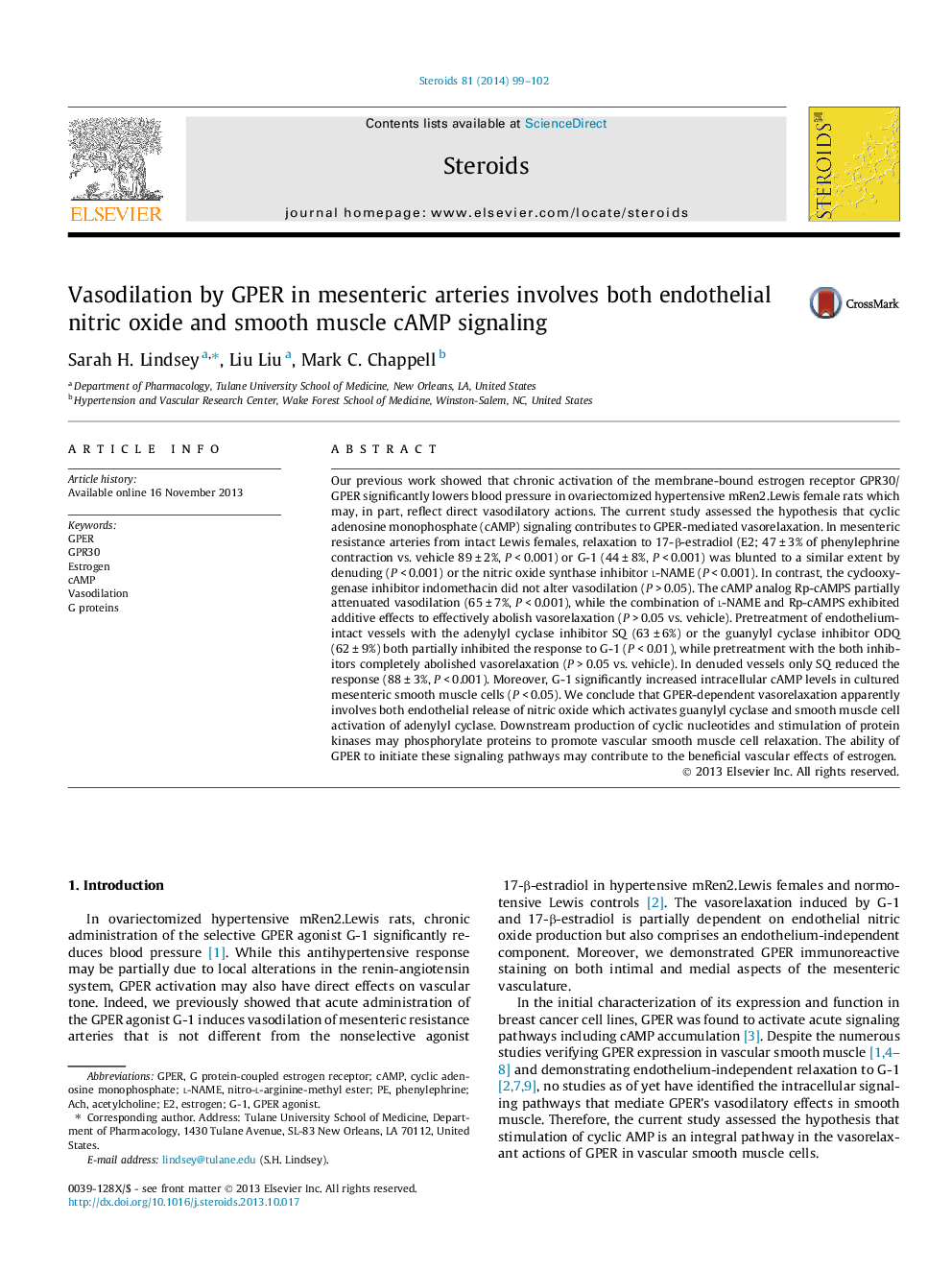| کد مقاله | کد نشریه | سال انتشار | مقاله انگلیسی | نسخه تمام متن |
|---|---|---|---|---|
| 2027848 | 1542726 | 2014 | 4 صفحه PDF | دانلود رایگان |

• Activation of the estrogen receptor GPER relaxes Lewis female mesenteric arteries.
• Vasorelaxation is partially dependent on endothelial production of nitric oxide.
• In vascular smooth muscle, vasorelaxation is dependent on cAMP production.
• In isolated vascular smooth muscle cells, GPER activation increases cAMP.
• These signaling pathways may promote vasorelaxation and oppose hypertension.
Our previous work showed that chronic activation of the membrane-bound estrogen receptor GPR30/GPER significantly lowers blood pressure in ovariectomized hypertensive mRen2.Lewis female rats which may, in part, reflect direct vasodilatory actions. The current study assessed the hypothesis that cyclic adenosine monophosphate (cAMP) signaling contributes to GPER-mediated vasorelaxation. In mesenteric resistance arteries from intact Lewis females, relaxation to 17-β-estradiol (E2; 47 ± 3% of phenylephrine contraction vs. vehicle 89 ± 2%, P < 0.001) or G-1 (44 ± 8%, P < 0.001) was blunted to a similar extent by denuding (P < 0.001) or the nitric oxide synthase inhibitor l-NAME (P < 0.001). In contrast, the cyclooxygenase inhibitor indomethacin did not alter vasodilation (P > 0.05). The cAMP analog Rp-cAMPS partially attenuated vasodilation (65 ± 7%, P < 0.001), while the combination of l-NAME and Rp-cAMPS exhibited additive effects to effectively abolish vasorelaxation (P > 0.05 vs. vehicle). Pretreatment of endothelium-intact vessels with the adenylyl cyclase inhibitor SQ (63 ± 6%) or the guanylyl cyclase inhibitor ODQ (62 ± 9%) both partially inhibited the response to G-1 (P < 0.01), while pretreatment with the both inhibitors completely abolished vasorelaxation (P > 0.05 vs. vehicle). In denuded vessels only SQ reduced the response (88 ± 3%, P < 0.001). Moreover, G-1 significantly increased intracellular cAMP levels in cultured mesenteric smooth muscle cells (P < 0.05). We conclude that GPER-dependent vasorelaxation apparently involves both endothelial release of nitric oxide which activates guanylyl cyclase and smooth muscle cell activation of adenylyl cyclase. Downstream production of cyclic nucleotides and stimulation of protein kinases may phosphorylate proteins to promote vascular smooth muscle cell relaxation. The ability of GPER to initiate these signaling pathways may contribute to the beneficial vascular effects of estrogen.
Journal: Steroids - Volume 81, March 2014, Pages 99–102